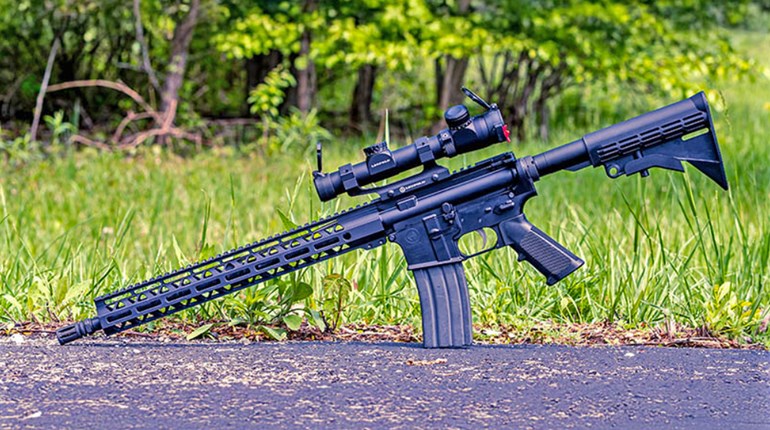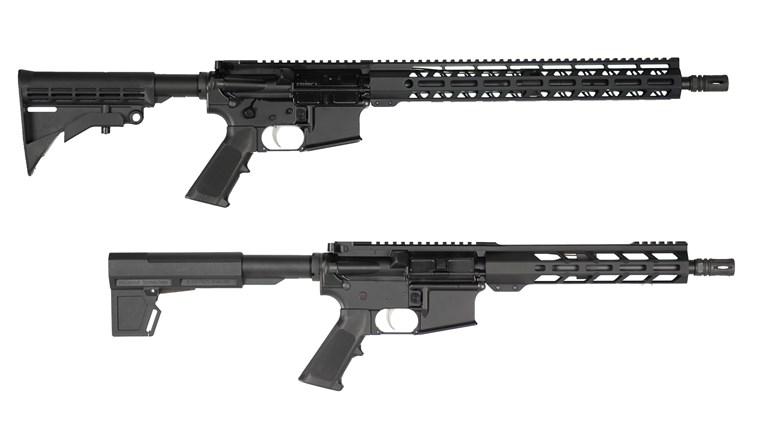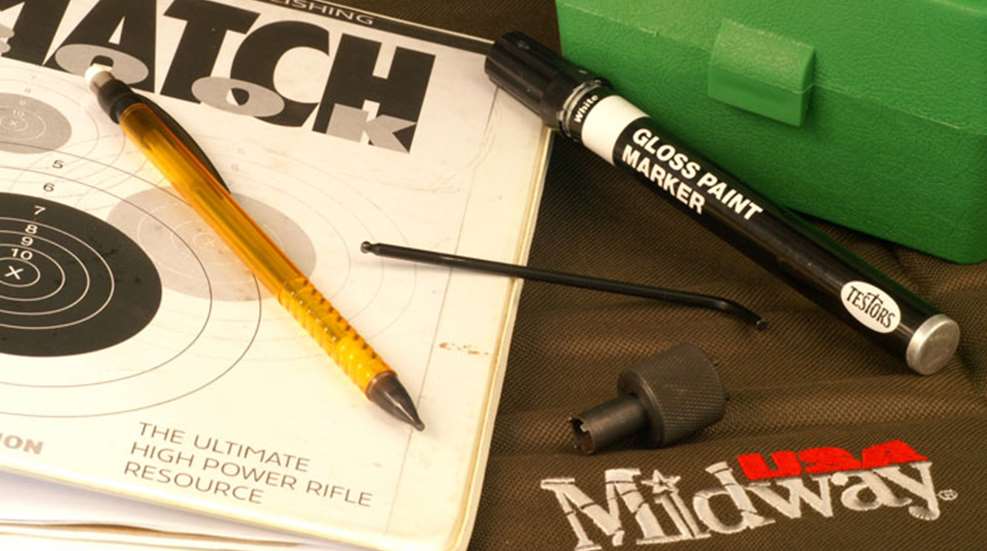
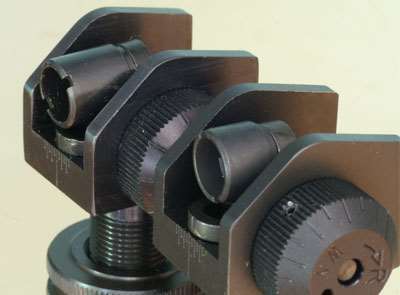
FINDING MECHANICAL ZERO
Mechanical zero, as I define the term, is literally putting the rear sight in the center of its wind adjustment range. Establishing a mechanical zero that also coincides with a no-wind zero requires some capacity to move the front sight, but we’ll cover that shortly.
Here’s how to find mechanical zero; only speaking to windage adjustment. Run the rear sight in one direction, left or right, until it stops. Make sure the final stop is a true click, and not just snugging the wind knob against the limit of the rear sight aperture’s movement. Count the number of clicks in one direction, then again going the other direction until it stops. Make sure the last one or two clicks are still “free” or still resulting in click-stop sight movement. Divide by two. Then count that number of clicks in toward center. Record this. If you want to mark this indication on the rifle, stick a piece of masking tape on the rear sight base and make your mark on the tape. I wouldn’t advise a permanent mark yet.
To get a mechanical zero to coincide with actual no-wind zero we need a front sight that can move left and right. Chances are slim that putting a rear sight in the center of its adjustment range will result in wind-centered shots on target. Even if all alignments were spot-on, ammunition and shooter position variables come into play. AR-15’s have been modified to allow for front sight housing relocation, which functions to provide wind adjustment.
SIGHT ELEVATION

Last thing before we get started, run the rear sight all the way down to its bottom. Make sure the last click before it bottoms is a full click. With a satisfactory click, go ahead and move the index ring to zero on this sight position.
Currently your rear sight is bottomed out, it needs to be brought up to get on target. Since it’s an AR-15, put six minutes (not clicks) of elevation on the rear sight (12 or 24 clicks, depending on if it’s a half-minute or quarter-minute increment sight). The idea is to get the rear sight aperture as low as it can be without the risk of running out of “down” adjustment for 200-yard or 100-yard events. For example, my normal come-up from 200 to 300 yards is only 14 clicks (3.5 MOA).
On these initial single-load impacts, the first trick is hitting the target, and bring the target closer if you need to. I suggest using a sight tool to thread the post up if the shots are going high and down if they’re going low. Shift the front sight housing toward the right if the shots are going right and to the left if the shots are going left. While you’re in position and holding on the aiming black, have an assistant shift the post position to the point on the target where the last impact was.
Now, and this is very important, if you are using an aftermarket supplied flat-faced front post (squared), the number of detent stops allowable at any one adjustment may increase, depending on the architecture of the post itself. The reason this is important is that we may not be able to discriminate nearly as well with smaller elevation incremental adjustments. A square post, truly square, can be moved one stop at a time. If the sides are lengthened, then it has to be moved two at a time.
THE WIND
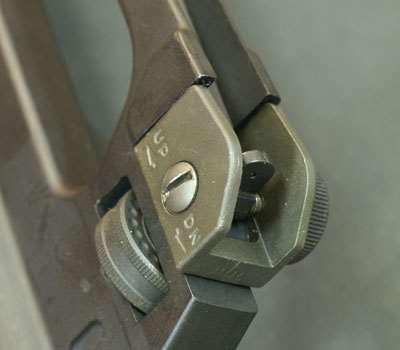
Now start shooting groups, and shoot these groups just as you would in a Rapid Fire event. Fire successive, self-loaded rounds, 10 at a time. This is very important! Don’t continue to fire single-load rounds. We’re not only establishing no-wind zero, but also the event-zero for the 300-yard Rapid Fire stage.
Make adjustments after the first group, then fire a couple of rounds to see if it was near what you expected, and then fire another group. Rinse and repeat. Fine-tune the elevation during this process as well. Don’t rest until you’re shooting impressive, very well-centered groups.
The test for event-zero is going to take at least one more group, I recommend shooting a full 20 rounds, or two 10-shot strings. If the shots are centered, then you found it. Make adjustments as needed to make it perfect, or until you run out of ammunition. There’s no harm at all in making small corrections at the back sight and calling it a day. Those corrections become your no-wind zero.
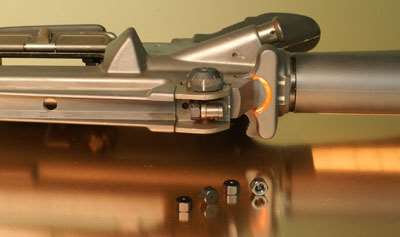
Record windage in at least two places. The first mark goes from the wind knob to the rear sight base. I put this mark where it’s easy to see from your position, which for me is at the back of the knob. The second mark should be made on the flipped down aperture to the sight base itself. The reason for this mark in addition to the scale is so you can see when you’re back on zero.
Other competitors and those pesky targets should dread your walk up to the firing line, now that your sights are perfectly zeroed. Elevation and wind have nothing on you, and your front sight housing couldn’t be more accurately placed. So keep calm, carry on, and have a blast firing the smallest groups at your next competition.














